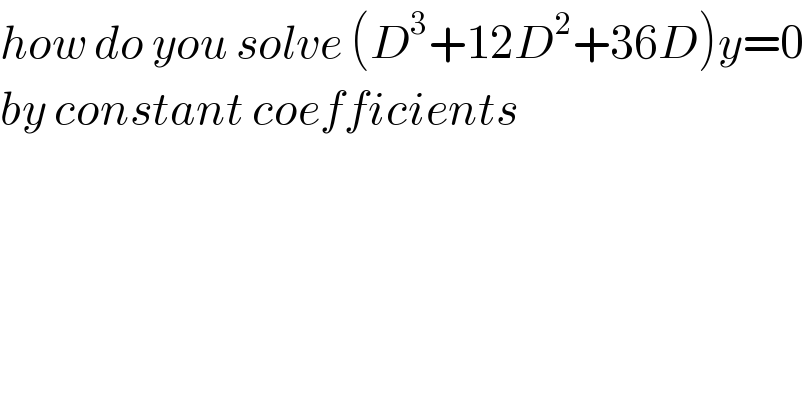Question Number 103969 by bobhans last updated on 18/Jul/20

$${how}\:{do}\:{you}\:{solve}\:\left({D}^{\mathrm{3}} +\mathrm{12}{D}^{\mathrm{2}} +\mathrm{36}{D}\right){y}=\mathrm{0} \\ $$$${by}\:{constant}\:{coefficients} \\ $$
Answered by mr W last updated on 18/Jul/20

$$\lambda\left(\lambda+\mathrm{6}\right)^{\mathrm{2}} =\mathrm{0} \\ $$$$\lambda=\mathrm{0},−\mathrm{6},−\mathrm{6} \\ $$$$\Rightarrow{y}=\left({A}+{Bx}\right){e}^{−\mathrm{6}{x}} +{C} \\ $$
Commented by bobhans last updated on 18/Jul/20

$${simple}\:{way} \\ $$
